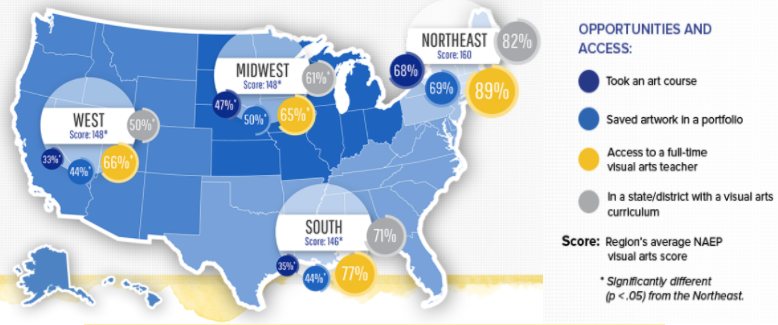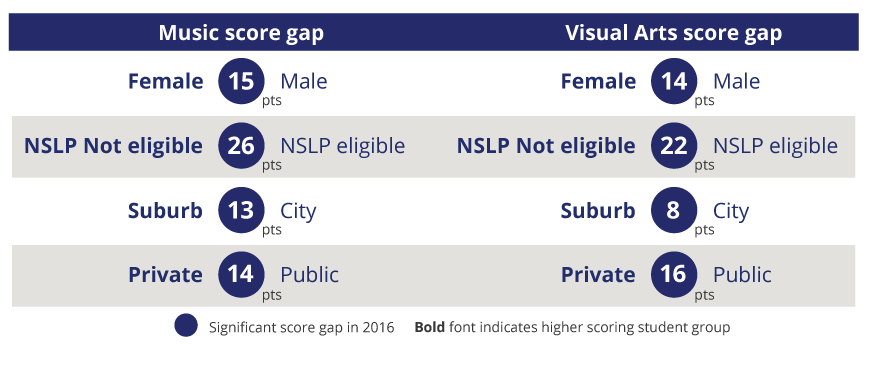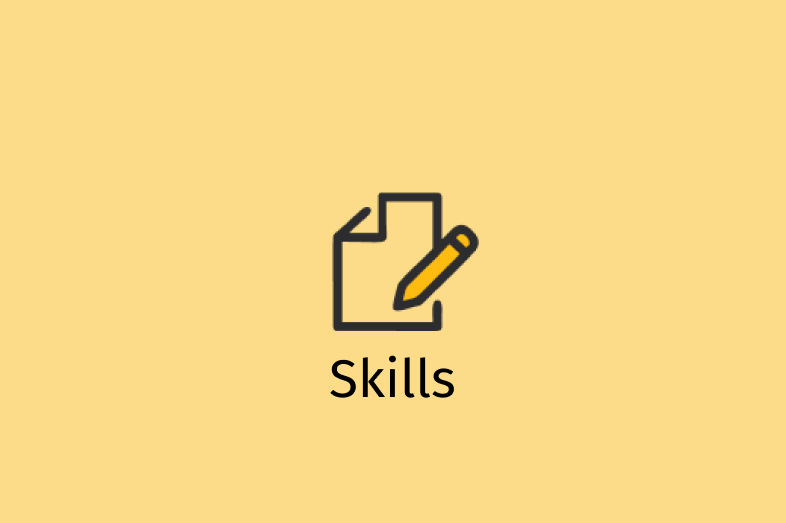That’s one of many opportunity gaps revealed in new data from an assessment administered to nearly 9,000 eighth-grade students across the country as part of the National Assessment of Educational Progress (NAEP). The representative sampling of students provides a detailed look at the current state of arts education in the U.S.
While students’ participation in the arts has remained steady since 2008, the results show disparities in access to music and visual arts experiences, both in and out of school, along lines of race, income, and location.
‘A good explanation is hard to find’
Overall last year, 63 percent of eighth-graders took a music class and 42 percent took a visual arts class, the results show. But students in the Northeast were twice as likely (68 percent) to have taken a visual arts class than students in the South (35 percent) and West (33 percent). Students in the Northeast were also significantly more likely to attend a school with a full-time arts teacher.
“That was the most surprising finding to me,” said Laura LoGerfo, the assistant director for reporting and analysis at the National Assessment Governing Board, which oversees NAEP. “A good explanation is hard to find. The South and the West were so different from the Northeast in terms of how much they provide in art resources, programs, and classes.”

Students in the Northeast earned higher visual arts scores and were more likely to have access to a visual arts teacher, among other resources. (NAGB graphic)
Some of that may have to do with population density, according to Dennis Inhulsen, chief learning officer for the National Art Education Association, a membership organization for visual arts educators.
“It’s more urban in the Northeast and there are more cultural opportunities, so by default schools will have more opportunities in the arts,” Inhulsen said. “If you live in a dense community and there are more opportunities for theater and dance and art, that’s gonna be reflected in the schools.”
Arts education advocates have long touted the benefits of activities such as band, choir, drawing, theater, and dance as part of a well-rounded education. Some research suggests that engagement in the arts boosts students’ critical-thinking skills, cultural awareness, and intellectual curiosity.
“Just as students need to learn reading literacy and numeric literacy, we also believe they need to learn artistic literacy,” said Lynn Tuttle, director of Public Policy and Professional Development at the National Association for Music Education. “It’s an incredibly important skill set in 21st century society. Information is presented to us in visuals, graphics, animations, theatrical performances, and music.”
Some states are using the flexibility granted to them under the 2015 federal education law, the Every Student Succeeds Act, to affirm the importance of the arts in schools. Of the 12 states and the District of Columbia that have so far submitted ESSA plans to the U.S. Department of Education, five include access and participation in arts education as a component of their proposed accountability systems.
Racial and Socioeconomic Divides
In addition to asking about students’ participation in the arts, the NAEP assessment gauges students’ knowledge and skills by asking them to analyze and describe different types of music and works of art.
Students, for example, are asked to listen to the beginning of George Gershwin’s Rhapsody in Blue and identify the instrument in the song’s beginning solo. About half of eighth-graders correctly identified the solo as being played on a clarinet.
Compared to the 2008 results, students’ music and visual arts scores remained about the same.
Still, that steadiness disguises the score gaps that persist between different groups of students. The largest gaps exist along lines of race and income.
On a scale of 300, students eligible for free and reduced-price lunch, which is often used as a proxy to identify low-income students, scored an average of 26 points lower in music than those not eligible and 22 points lower in visual arts, both statistically significant figures.

Some of the largest score gaps exist between students who are eligible for free and reduced-price lunch and those who are not. (NAEP graphic)
The gap between white and black students was also statistically significant: black students scored 29 points lower in music and 30 points in visual arts. An even greater gap exists between Asian/Pacific Islander students, who averaged the highest scores, and black students, who, on average, scored lowest.
‘The exposure piece matters’
Some of the gap between low-income students and their higher-income peers may be explained by the fact that engaging with the arts outside of the classroom can, for some families, be prohibitively expensive, LoGerfo said.
“Kids that are doing well on the assessment tend to have more exposure to music and the arts [outside of school]. And those opportunities are often tied to family resources.” LoGerfo said.
That hypothesis appears to be backed up by the NAEP data. Higher-income students were more likely to own an instrument (55 percent) than low-income students (38 percent). And just 9 percent of lower-income students reported taking private music lessons outside of school compared to 17 percent of their higher-income peers.
Similarly, the assessment asked students if they had attended a theater performance outside of school. Nearly three-quarters of higher-income students and 59 percent of lower-income students said they had. Broken down along racial and ethnic lines, Asian/Pacific Islander students were most likely to have attended a theater performance (77 percent), followed by white students (73 percent), black students (65 percent), and Hispanic students (55 percent).
Asian/Pacific Islander students were also most likely to own an instrument (63 percent), followed by white students (53 percent), Hispanic students (40 percent), and black students (36 percent).
“The exposure piece matters,” said Inhulsen of the National Arts Education Association. “It’s more than just playing an instrument or singing in a choir. It’s about community and culture and understanding how people live and celebrate life.”
There were some bright spots in the assessment results. The score gap between white and Hispanic students narrowed, and the results shows that English-language learners are just as likely to take a music or arts class as their native English-speaking peers.
And despite the lack of growth in the students’ scores, some arts education advocates see reason for optimism.
“During the recession, many schools had to cut back on resources, including their music and arts programming, so it’s positive that it at least stayed relatively stable,” said Tuttle.
Arts Programs in the Crosshairs?
The assessment results come at a time of considerable uncertainty about the fate of arts programs, in schools and otherwise. President Donald Trump’s proposed budget, released earlier this year, called for major cuts to arts funding for schools and the elimination of the National Endowment for the Arts.
On top of that, advocates for arts education are closely watching what comes of the administration’s push for more school choice. Expanding access to charter and private schools has been a central component of U.S. Education Secretary Betsy Devos’ agenda thus far.
While some in the arts community worry that charter and private schools lack the resources to provide high-quality arts education, increased competition between schools could be a “good thing” for the arts if it incentivizes schools to offer more robust arts programs to attract parents and students, said Inhulsen.
“Parents don’t want schools without the arts,” Inhulsen said. “Parents know when their children are singing, acting, and dancing, they’re learning.”





